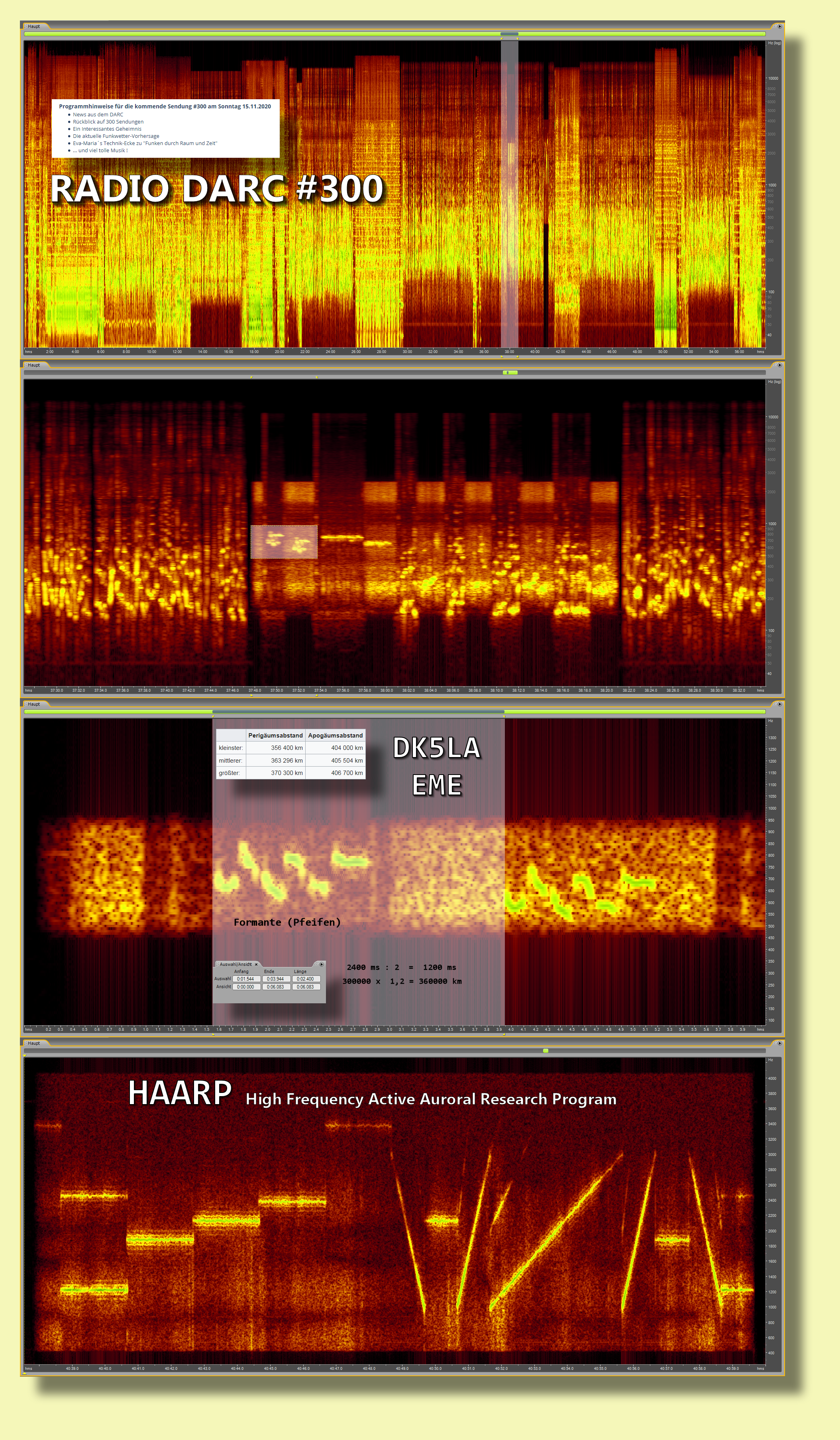http://www.rhci-online.net/radiogram/radiogram.htm

RSID: <<2020-11-15T01:30Z
MFSK-64 @
5960000+1500>>
Freddie Garrity, of Freddie and the Dreamers, was born
November 14, 1936.
He died in 2006.
Sending Pic:207x220;

bit.ly/2UbSMLY
Please report your decode to
themightykbc@gmail.com

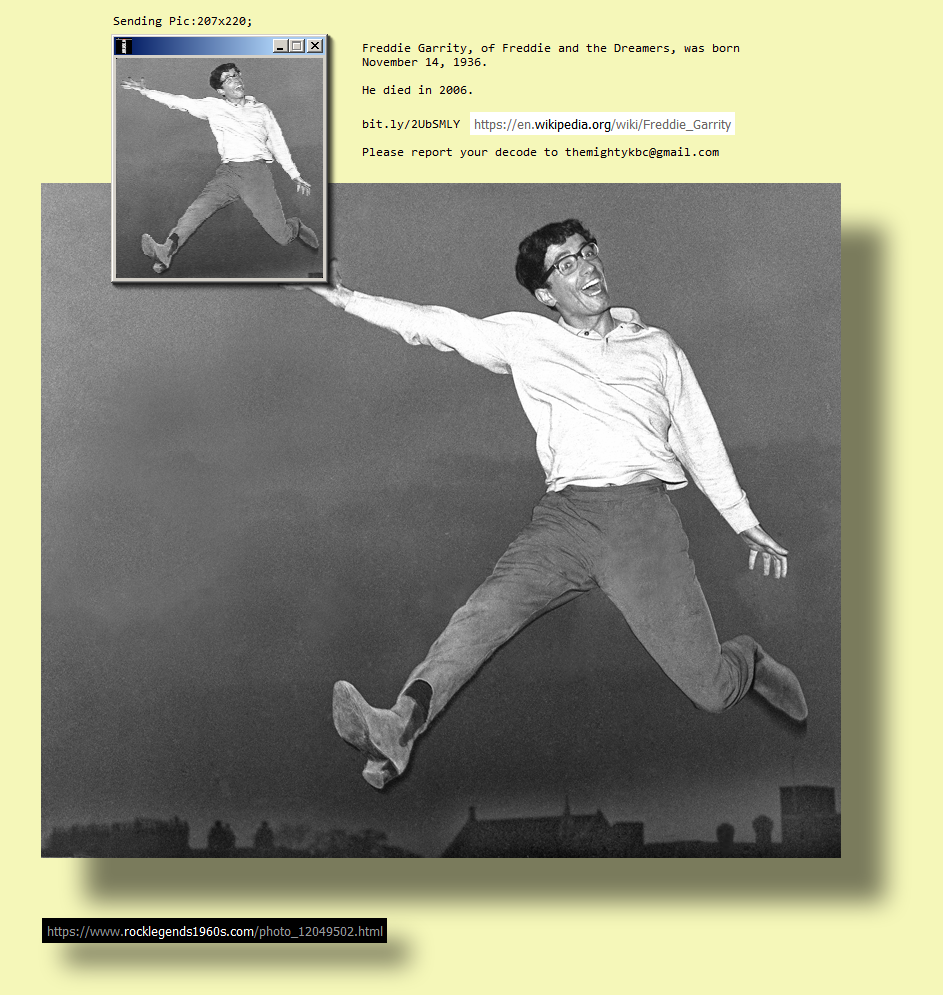


RSID: <<2020-11-13T00:31Z
MFSK-32 @
9265000+1500>>
Welcome to program 178 of Shortwave Radiogram.
I'm Kim Andrew Elliott in Arlington, Virginia USA.
Here is the lineup for today's program, in MFSK modes as noted:
1:39 MFSK32: Program preview (now)
2:43 Hurricanes lingering longer after landfall
5:58 MFSK64: Science's top 10 erroneous results
14:24 This week's images*
28:34 MFSK32: Closing announcements
* with images
Please send reception reports to
radiogram@verizon.net
And visit http://swradiogram.net
Twitter:
@SWRadiogram
From Science News:
Once hurricanes make landfall, they're lingering longer and
staying stronger
As climate warms, hurricanes could maintain their fury and
wreak devastation farther inland
Carolyn Gramling
11 November 2020
Atlantic hurricanes are taking longer to weaken after making
landfall than they did 50 years ago, thanks to climate change.
Over the past 50 years, increasingly warm ocean waters have
juiced up the storms, giving them more staying power after they
roar ashore, scientists report in the Nov. 12 Nature. That could
potentially extend storms' destructive power farther inland, the
researchers say.
As ocean waters warm, tropical cyclones — called hurricanes in
the Atlantic Ocean — are likely to gain in intensity, studies
show. They can also hold more moisture, leading to seemingly
unremitting rainfall. And they may move more slowly, allowing
more time to dump that rain on coastal communities. All of this
increases the potential hazard on land.
Once a storm hits land, its energy begins to dissipate. But that
relief is coming later than it once did, report physicists Lin Li
and Pinaki Chakraborty, both of the Okinawa Institute of Science
and Technology in Japan.
Li and Chakraborty analyzed the intensity of historical Atlantic
hurricanes over the first 24 hours after landfall. In 1967, a
typical storm's intensity decayed by 76 percent within the first
day after landfall. But by 2018, storms were only 52 percent less
intense after 24 hours. That trend, the researchers say, aligns
with increasing sea-surface temperatures in the Gulf of Mexico
and the western Caribbean Sea.
That's because the intense winds of cyclones feed on moisture and
heat picked up from the warm waters, and warmer air can also hold
more moisture. So as the oceans heat up, they not only add more
moisture, making hurricanes rainier, but also add more heat —
like a portable engine the storm uses to fuel its fury for just a
bit longer.
https://www.sciencenews.org/article/climate-hurricanes-landfall-lingering-longer-staying-stronger
Shortwave Radiogram changes to MFSK64 ...
RSID: <<2020-11-13T00:36Z
MFSK-64 @
9265000+1500>>
This is Shortwave Radiogram in MFSK64
Please send your reception report to
radiogram@verizon.net
From Science News:
These are science's Top 10 erroneous results
Mistakes from the past demonstrate the reliability of
science
Tom Siegfried
10 November 2020
To err is human, which is really not a very good excuse.
And to err as a scientist is worse, of course, because depending
on science is supposed to be the best way for people to make sure
they're right. But since scientists are human (most of them,
anyway), even science is never free from error. In fact, mistakes
are fairly common in science, and most scientists tell you they
wouldn't have it any other way. That's because making mistakes is
often the best path to progress. An erroneous experiment may
inspire further experiments that not only correct the original
error, but also identify new previously unsuspected truths.
Still, sometimes science's errors can be rather embarrassing.
Recently much hype accompanied a scientific report about the
possibility of life on Venus. But instant replay review has now
raised some serious concerns about that report's conclusion.
Evidence for the gas phosphine, a chemical that supposedly could
be created only by life (either microbes or well-trained human
chemists), has started to look a little shaky. (See the story by
well-trained Science News reporter Lisa Grossman.)
While the final verdict on phosphine remains to be rendered, it's
a good time to recall some of science's other famous errors.
We're not talking about fraud here, or just bad ideas that were
worth floating but flopped instead, or initial false positives
due to statistical randomness. Rather, let's just list the Top 10
erroneous scientific conclusions that got a lot of attention
before ultimately getting refuted. (With one exception, there
will be no names, for the purpose here is not to shame.)
10. A weird form of life
A report in 2010 claimed that a weird form of life incorporates
arsenic in place of phosphorus in biological molecules. This one
sounded rather suspicious, but the evidence, at first glance,
looked pretty good. Not so good at second glance, though. And
arsenic-based life never made it into the textbooks.
9. A weird form of water
In the 1960s, Soviet scientists contended that they had produced
a new form of water. Ordinary water flushed through narrow tubes
became denser and thicker, boiled at higher than normal
temperatures and froze at much lower temperatures than usual. It
seemed that the water molecules must have been coagulating in
some way to produce “polywater.” By the end of the 1960s chemists
around the world had begun vigorously pursuing polywater
experiments. Soon those experiments showed that polywater's
properties came about from the presence of impurities in ordinary
water.
8. Neutrinos, faster than light
Neutrinos are weird little flyweight subatomic particles that zip
through space faster than Usain Bolt on PEDs. But not as fast as
scientists claimed in 2011, when they timed how long it took
neutrinos to fly from the CERN atom smasher near Geneva to a
detector in Italy. Initial reports found that the neutrinos
arrived 60 nanoseconds sooner than a beam of light would.
Faster-than-light neutrinos grabbed some headlines, evoked
disbelief from most physicists and induced Einstein to turn over
in his grave. But sanity was restored in 2012, when the research
team realized that a loose electrical cable knocked the
experiment's clocks out of sync, explaining the error.
7. Gravitational waves from the early universe
All space is pervaded by microwave radiation, the leftover glow
from the Big Bang that kicked the universe into action 13.8
billion years ago. A popular theory explaining details of the
early universe — called inflation — predicts the presence of
blips in the microwave radiation caused by primordial
gravitational waves from the earliest epochs of the universe.
In 2014, scientists reported finding precisely the signal
expected, simultaneously verifying the existence of gravitational
waves predicted by Einstein's general theory of relativity and
providing strong evidence favoring inflation. Suspiciously,
though, the reported signal was much stronger than expected for
most versions of inflation theory. Sure enough, the team's
analysis had not properly accounted for dust in space that skewed
the data. Primordial gravitational waves remain undiscovered,
though their more recent cousins, produced in cataclysmic events
like black hole collisions, have been repeatedly detected in
recent years.
6. A one-galaxy universe
In the early 20th century, astronomers vigorously disagreed on
the distance from Earth of fuzzy cloudlike blobs shaped something
like whirlpools (called spiral nebulae). Most astronomers
believed the spiral nebulae resided within the Milky Way galaxy,
at the time believed to comprise the entire universe. But a few
experts insisted that the spirals were much more distant,
themselves entire galaxies like the Milky Way, or “island
universes.” Supposed evidence against the island universe idea
came from measurements of internal motion in the spirals. It
would be impossible to detect such motion if the spirals were
actually way far away. But by 1924, Edwin Hubble established with
certainty that at least sone of the spiral nebulae were in fact
island universes, at vast distances from the Milky Way. Those
measurements of internal motion were difficult to make — and they
just turned out to be wrong.
5. A supernova's superfast pulsar
Astronomers rejoiced in 1987 when a supernova appeared in the
Large Magellanic Cloud, the closest such stellar explosion to
Earth in centuries. Subsequent observations sought a signal from
a pulsar, a spinning neutron star that should reside in the
middle of the debris from some types of supernova explosions. But
the possible pulsar remained hidden until January 1989, when a
rapidly repeating radio signal indicated the presence of a
superspinner left over from the supernova. It emitted radio beeps
nearly 2,000 times a second — much faster than anybody expected
(or could explain). But after one night of steady pulsing, the
pulsar disappeared. Theorists raced to devise clever theories to
explain the bizarre pulsar and what happened to it. Then in early
1990, telescope operators rotated a TV camera (used for guiding
the telescope) back into service, and the signal showed up again
— around a different supernova remnant. So the supposed signal
was actually a quirk in the guide camera's electronics — not a
message from space.
4. A planet orbiting a pulsar
In 1991, astronomers reported the best case yet for the existence
of a planet around a star other than the sun. In this case, the
“star” was a pulsar, a spinning neutron star about 10,000
light-years from Earth. Variations in the timing of the pulsar's
radio pulses suggested the presence of a companion planet,
orbiting its parent pulsar every six months. Soon, though, the
astronomers realized that they had used an imprecise value for
the pulsar's position in the sky in such a way that the signal
anomaly resulted not from a planet, but from the Earth's motion
around the sun.
3. Age of Earth
In the 1700s, French naturalist Georges-Louis Leclerc, Comte de
Buffonestimated an Earth age of about 75,000 years, while
acknowledging it might be much older. And geologists of the 19th
century believe it to be older still — hundreds of millions of
years or more — in order to account for the observation of layer
after layer of Earth's buried history. After 1860, Charles
Darwin's new theory of evolution also implied a very old Earth,
to provide time for the diversity of species to evolve. But a
supposedly definite ruling against such an old Earth came from a
physicist who calculated how long it would take an originally
molten planet to cool. He applied an age limit of about 100
million years, and later suggested that the actual age might even
be much less than that. His calculations were in error, however —
not because he was bad at math, but because he didn't know about
radioactivity.
Radioactive decay of elements in the Earth added a lot of heat
into the mix, prolonging the cooling time. Eventually estimates
of the Earth's age based on rates of radioactive decay
(especially in meteorites that formed around the same time as the
Earth) provided the correct current age estimate of 4.5 billion
years or so.
2. Age of the universe
When astronomers first discovered that the universe was
expanding, at the end of the 1920s, it was natural to ask how
long it had been expanding. By measuring the current expansion
rate and extrapolating backward, they found that the universe
must be less than 2 billion years old. Yet radioactivity
measurements had already established the Earth to be much older,
and it was very doubtful (as in impossibly ridiculous) that the
universe could be younger than the Earth. Those early
calculations of the universe's expansion, however, had been based
on distance measurements relying on Cepheid variable stars.
Astronomers calculated the Cepheids' distances based on how
rapidly their brightness fluctuated, which in turn depended on
their intrinsic brightness. Comparing intrinsic brightness to
apparent brightness provided a Cepheid's distance, just as you
can gauge the distance of a lightbulb if you know its wattage (oh
yes, and what kind of lightbulb it is). It turned out, though,
that just like lightbulbs, there is more than one kind of Cepheid
variable, contaminating the expansion rate calculations. Nowadays
converging methods give an age of the universe of 13.8 billion
years, making the Earth a relative newcomer to the cosmos.
geocentric map
1. Earth in the middle
OK, we're going to name and blame Aristotle for this one. He
wasn't the first to say that the Earth occupies the center of the
universe, but he was the most dogmatic about it, and believed he
had established it to be incontrovertibly true — by using logic.
He insisted that the Earth must be in the middle because earth
(the element) always sought to move toward its “natural place,”
the center of the cosmos. Even though Aristotle invented formal
logic, he apparently did not notice a certain amount of
circularity in his argument. It took a while, but in 1543
Copernicus made a strong case for Aristotle being mistaken. And
then in 1610 Galileo's observation that Venus went through a full
set of phases sealed the case for a sun-centered solar system.
Now, it would be nice if there were a lesson in this list of
errors that might help scientists do better in the future. But
the whole history of science shows that such errors are actually
unavoidable. There is a lesson, though, based on what the
mistakes on this list have in common: They're all on a list of
errors now known to be errors. Science, unlike certain political
philosophies and personality cults, corrects its mistakes. That's
the lesson, and that's why respecting science is so important to
avoiding errors in other realms of life.
https://www.sciencenews.org/article/science-top-10-erroneous-results-mistakes
This is Shortwave Radiogram in MFSK64
Please send your reception report to
radiogram@verizon.net
This week's images ...
Morning mist over Saranac Lake, New York.
https://bit.ly/35lq3uk
...
Sending Pic:303x220;
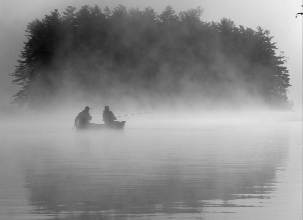
Sunrise at Palomina Farm, Orange, Virginia.
https://bit.ly/3kpw4uv ...
Sending Pic:199x185C;

Recrystallized callus remover, from the close-up photography
awards.
https://bit.ly/2UkBOv2 ...
Sending Pic:210x140C;

An eastern festoon butterfly, from the close-up photograhpy
awards.
https://bit.ly/2UkBOv2 ...
Sending Pic:207x149C;

Kelvin Way in Glasgow while the road is open to pedestrians and
cyclists. https://bbc.in/2Um3mjn ...
Sending Pic:324x258;
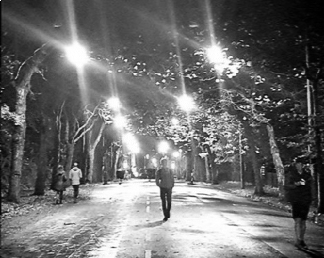
Autumn leaves on the ground in Rock Creek Park, Washington DC.
https://bit.ly/3kmfxaI ...
Sending Pic:201x134C;

The leaves of a sycamore sapling in Vienna, Virginia.
https://bit.ly/2JTciuE ...
Sending Pic:160x178C;

Our painting of the week is "November in Paris" by Leonid
Afremov.
https://bit.ly/2GRB798 ...
Sending Pic:202x169C;

Shortwave Radiogram returns to MFSK32 ...
RSID: <<2020-11-13T00:58Z
MFSK-32 @
9265000+1500>>
This is Shortwave Radiogram in MFSK32 ...
Shortwave Radiogram is transmitted by:
WRMI, Radio Miami International, wrmi.net
and
WINB Shortwave, winb.com
Please send reception reports to
radiogram@verizon.net
And visit http://swradiogram.net
Twitter:
@SWRadiogram or
twitter.com/swradiogram
I'm Kim Elliott. Please join us for the next Shortwave
Radiogram.
http://www.rhci-online.net/radiogram/radiogram.htm
http://wiki.radioreference.com/index.php/Decoding_the_SW_Radiogram_Broadcasts
https://www.qsl.net/ve7vv/Files/Digital%20Modes.pdf

RSID: <<2020-11-11T21:46Z
MFSK-64 @
7780000+1500>>

This Is A Music Show #089
11 November 2020
2100-2200UTC Wednesday on 7780 kHz
0200-0300UTC Thursday on 5850 kHz
via WRMI, Okeechobee USA
Rebroadcast on Unique Radio, Australia
1000-1100UTC Friday on 5045 or 3210 kHz USB
Check https://www.uniqueradio.biz/
for schedule!
(Temporarily Offline)
***ALSO***
TIAExpressMS w/ Radio Northern Europe International
via Channel 292 in Germany, on 6070 kHz.
Broadcast various dates/times. Check the schedule here:
https://www.channel292.de/schedule-6070-khz/
https://rnei.org/
----------------------------------------
PLAYLIST
Link of note:
None this week. :(
-----
Please send reception reports/comments:
thisisamusicshow@gmail.com
Follow TIAMS on Twitter:
www.twitter.com/ThisIsAMusicSho/
------
Thanks for listening!
--YOUR HOST--
EOM
RSID: <<2020-11-11T21:48Z
MFSK-64 @
7780000+1500>>
[AM]
Sending Pic:300x300Cp4;

RSID: <<2020-11-11T21:51Z
PSK-1000R @
7780000+1500>>
[USB !!]

****PSK-1000R TEST****
Building odn RNEI's most recent test, here is another round of PSK-1000R.
Please let me know how this is received.
Thanks!
thisisamusicshow@gmail.com
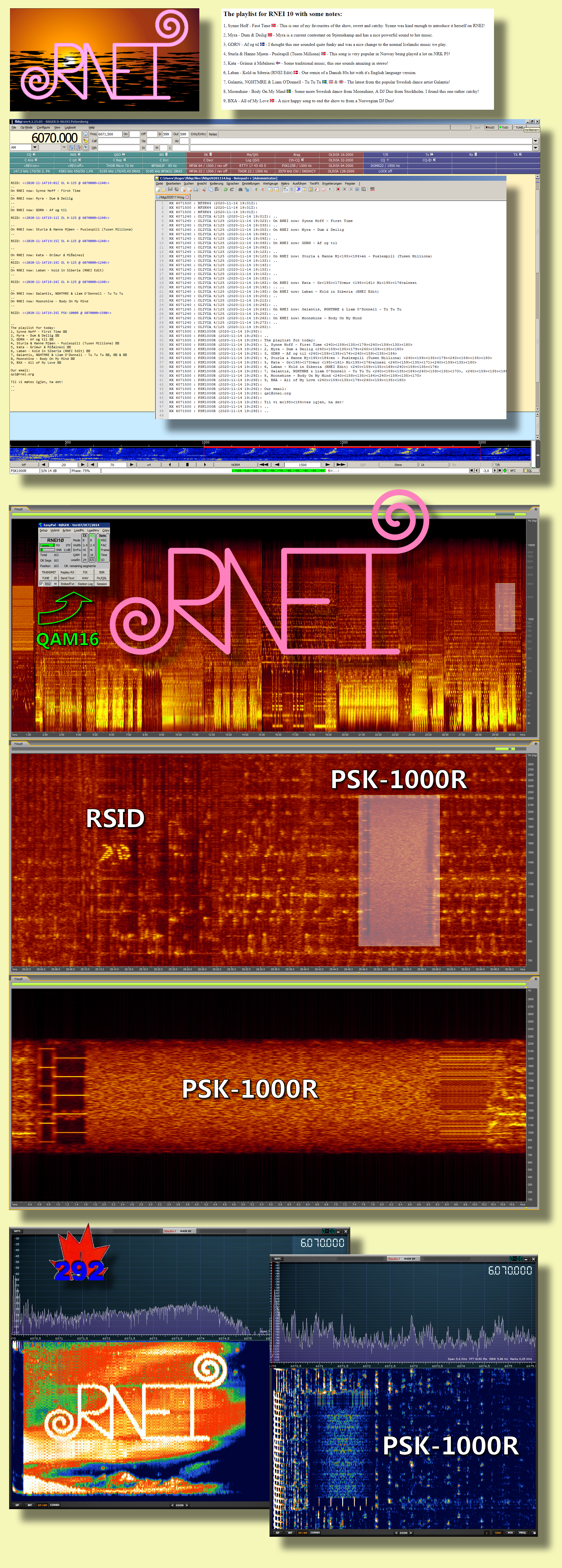
RSID: <<2020-11-14T19:50Z
MFSK-64 @
6070000+1500>>

This Is An Express Music Show
November 2020
Channel 292 on 6070 kHz
----------------------------------------
PLAYLIST
The Schooners - Schooner Blues
-----
Denise Brousseau - On Ne Choisit Pas
Brenda And The Tabulations - Little Bit Of Love
-----
Dennis Brown - No More Will I Roam
Rupie Edwards All Stars - I Wanna Be Loved (Version)
-----
The Moog Machine - Jumpin' Jack Flash
-----
THIS DATA
------
Anita Ward - Spoiled By Your Love
----------------------------------------
Be sure to tune in to "This Is A Music Show" hour-long program
every Wednesday at 2100UTC on 7780 kHz via WRMI (Europe beam)
---------------------------------------
Please send reception reports/comments:
thisisamusicshow@gmail.com
Follow TIAMS on Twitter:
www.twitter.com/ThisIsAMusicSho/
------
Thanks for listening!
--YOUR HOST--
EOM
RSID: <<2020-11-14T19:50Z
MFSK-64 @
6070000+1500>>
Sending Pic:300x300p4;


http://www.rhci-online.net/html/RNEI10/rnei10-edit.html
https://www.dropbox.com/s/kp1ths8jmrjhuzo/201102175732-rnei10.7z?dl=0
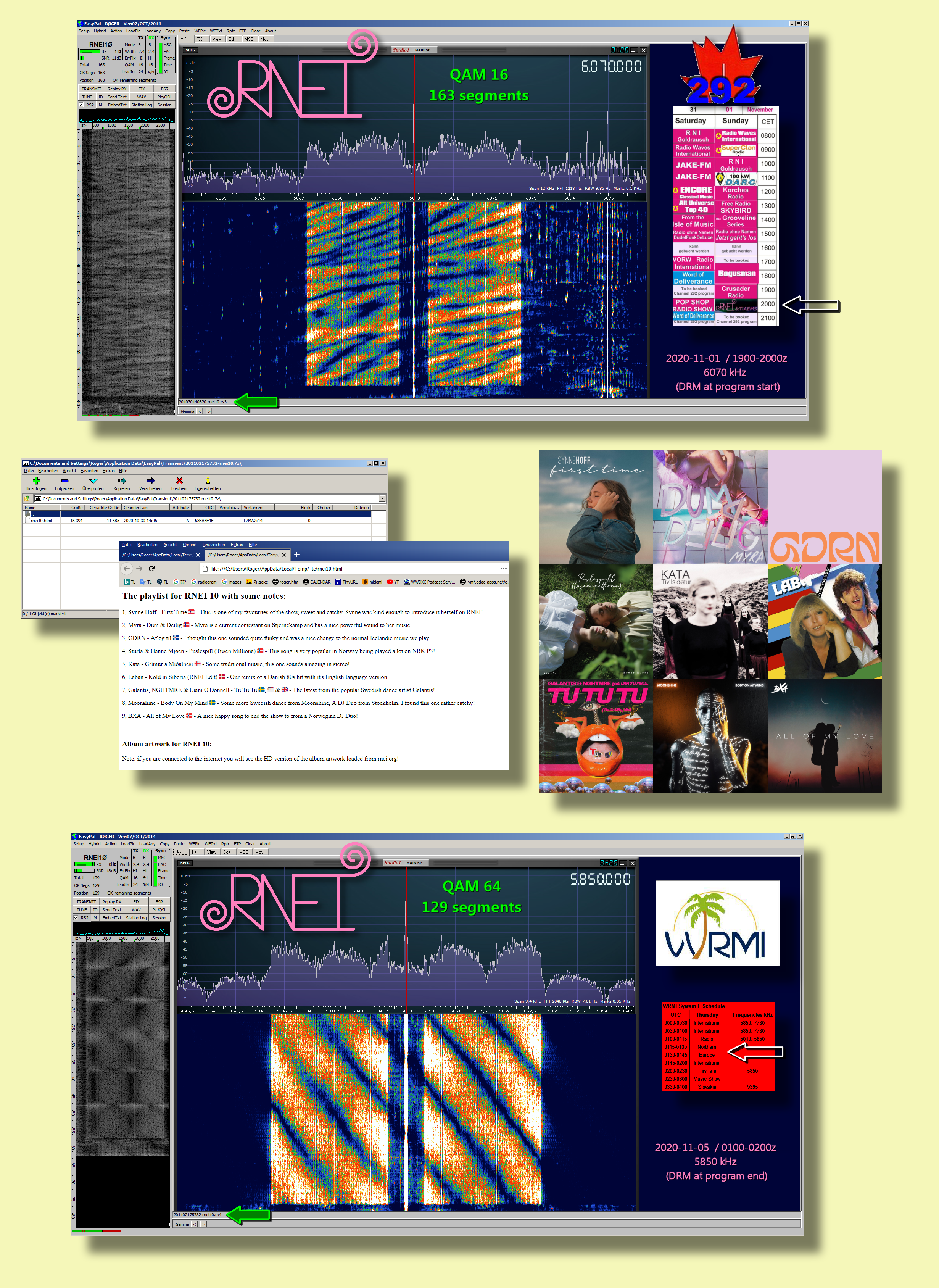
http://www.rhci-online.net/html/RNEI10/rnei10-edit.html
https://www.dropbox.com/s/kp1ths8jmrjhuzo/201102175732-rnei10.7z?dl=0
https://www.radioeins.de/programm/sendungen/medienmagazin/radio_news/beitraege/2015/ndr_kw.html
|
|
|
|
Nauen 6080
kHz 1900-2100z + 6145 kHz 2100-2300z
===> 250°
Atlantic - North |
|
|
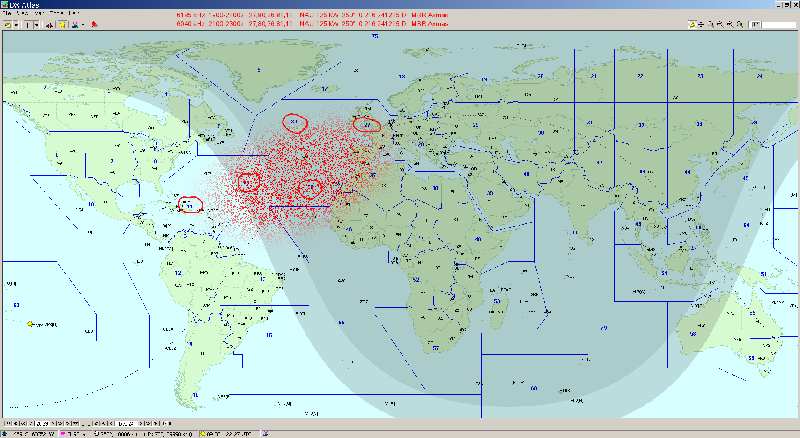 |
24.12.2019 = 24.12.2020
6030 kHz 1900-2100z
27,28,29
ERV 100 kW
305°
241219 ARM 2018: 6030 kHz 2017: 6010 kHz
6080 kHz 1900-2100z
27,80,36,81,11
NAU 125 kW
250°
241219 D 2018: 6080 kHz 2017:
6080 kHz
9740 kHz 1900-2100z
48,53,41,79
NAU 125 kW 130°
241219 D 2018: 9740 kHz 2017: 9740 kHz
9570 kHz 1900-2100z
41,49,54,79,58
MOS 100 kW 115°
241219 AUT 2018: 9570 kHz 2017: 9790 kHz
9800 kHz 1900-2100z
57,53,48,79
ISS 250 kW 148°
241219 F 2018: 9800 kHz 2017:
9800 kHz
11650 kHz 1900-2100z
13,46,15,66,52,57
ISS 250 kW 195°
241219 F 2018: 11650 kHz 2017:
11650 kHz
6145 kHz 2100-2300z
27,80,36,81,11
NAU 125 kW 250°
241219 D 2018: 6145 kHz 2017: 5930 kHz
6155 kHz 2100-2300z
27,28,29
ERV 100 kW 305°
241219 ARM 2018: 6155 kHz 2017: 6155 kHz
9590 kHz 2100-2300z
57,53,48,79
ISS 250 kW 148°
241219 F 2018: 9590 kHz 2017:
9590 kHz
9675 kHz 2100-2300z
41,49,54,79,58 MOS 100
kW 115°
241219 AUT 2018: 9650 kHz 2017: 9650 kHz
9740 kHz 2100-2300z
48,53,41,79
NAU 125 kW 130°
241219 D 2018: 9720 kHz 2017: 9765 kHz
9830 kHz 2100-2300z
13,46,15,66,52,57 ISS 250
kW 195°
241219 F 2018: 9830 kHz 2017:
9830 kHz
https://www.radioeins.de/programm/sendungen/medienmagazin/radio_news/beitraege/2015/ndr_kw.html |
|
|
|
|
|
|
|
Issoudun 11650 kHz 1900-2100z
+ 9830 kHz 2100-2300z
===> 195°
Atlantic -
South |
Issoudun 9800 kHz
1900-2100z + 9590
kHz 2100-2300z
===> 148°
Atlantic / Indian Ocean (South
Africa) |
|
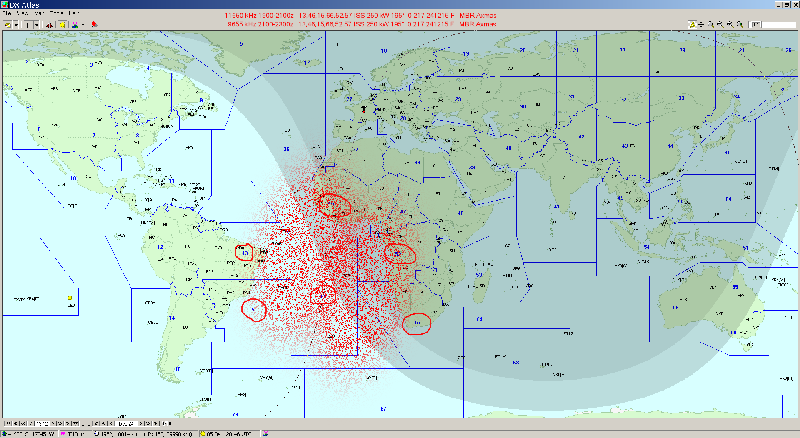 |
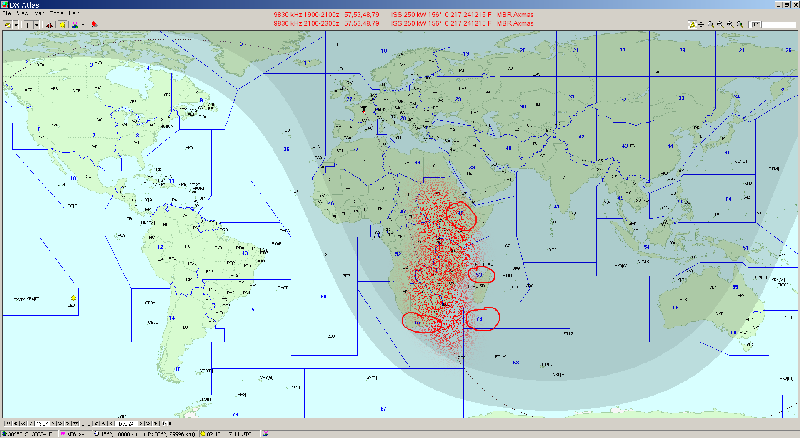 |
|
|
|
|
|
|
|
Nauen 9740 kHz 1900-2100z
+ 9740 kHz 2100-2300z
===> 130°
Indian Ocean - West |
Moosbrunn 9570 kHz 1900-2100z
+ 9675 kHz 2100-2300z
===>
115°
Indian Ocean - East |
|
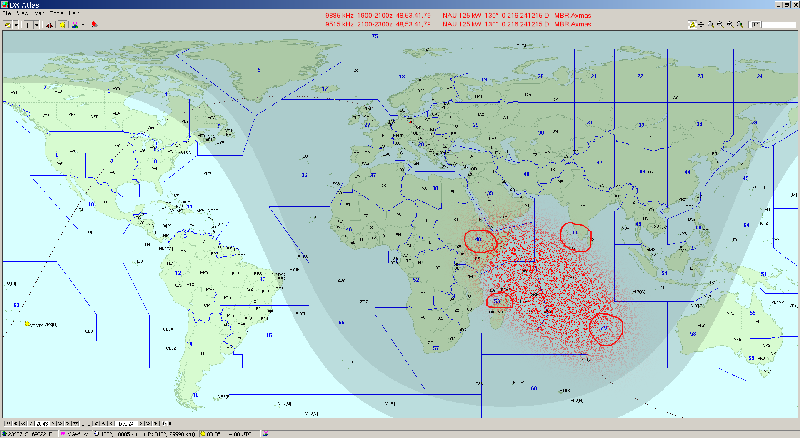 |
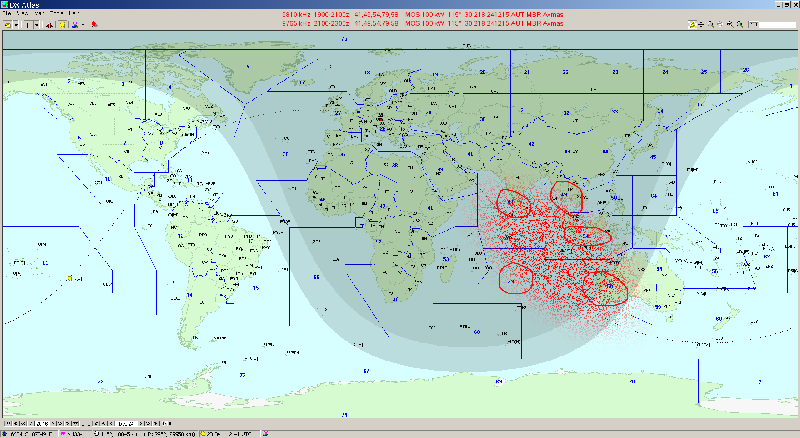 |
|
|
|
Noratus 6030 kHz 1900-2100z
Europe
+ 6155 kHz 2100-2300z
Europe + Parts of North America
===> 305°
|
|
|
